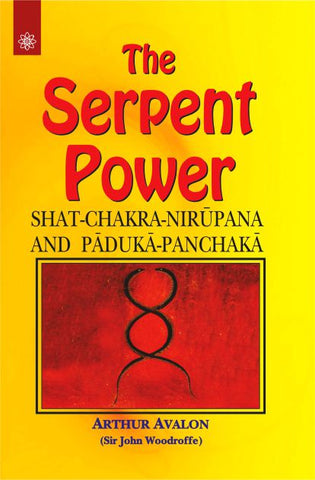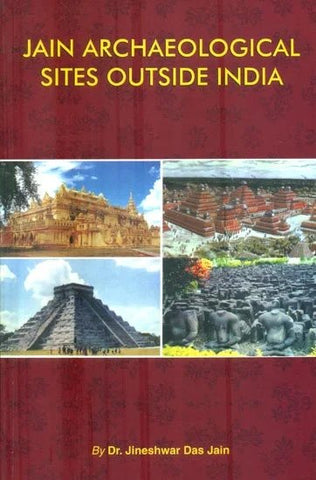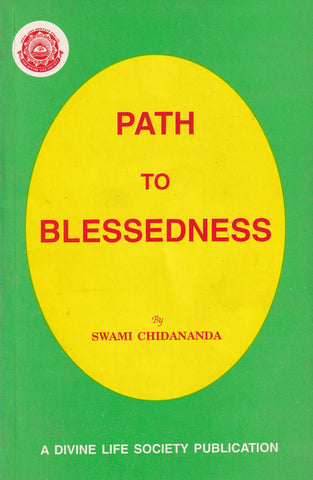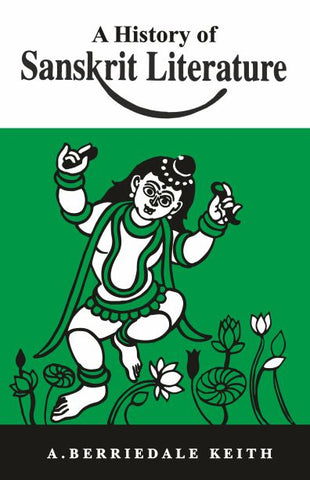Your cart is empty now.
Your search for "purana" revealed the following:
Blissful Experience Bhakti,Quintessence of Indian Philosophy
Bhakti -yoga is seen as the direct path to perfection that leads to the very heart of religious consciousness. Ramanuja’s concept of bhakti (devotion) emphasised the practice of self-surrender through which a person realises his personality, strengths and weaknesses, and hidden powers. Bhakti, for him, acts as a link between mortals and the Ultimate Reality. This book examines the views of Visistadvaita of Ramanuja on bhakti and prapatti (self surrender). It studies in-depth the meaning of God, the soul and the Supreme Soul, and the world; the concept of bhakti; the different stages of bhakti referring to numerous sources that... Read More
The Serpent Power: Shat-Chakra-Nirupana and Paduka-Panchaka
This work is a description and explanation in fuller detail of the Serpent Power (Kundalini Shakti), and the Yoga effected through it, a subject occupying a pre-eminent place in the Tantra Shastra. It consists of a translation of two Sanskrit works published some years ago in the second volume of my series of Tantrik Texts, but hitherto untranslated. Preface In my work “Shakti and Shakta” I outlined for the first time the principles of “Kundali-Yoga” so much discussed in some quarters, but of which so little was known. This work is a description and explanation in fuller detail of the... Read More
English, 665 Pgs. (PB)Jain Archaeological Sites Outside India
For the first time when I happened to read an article on Angkor temples in National Geographic, May 1982 by Peter J. White, I had envisaged that these temples are basically dedicated to the Jain religion because the Five Meru Temples (i.e Angkorvat) and 52 towers temples of Angkor Thom have been of biggest reverence to the Jains all over the world. I feel that western historians and geographers are not fully aware of the Jain religion, philosophy, and the geographical locations of famous Jain temples throughout the world. The Chinese pilgrims of the 4th to 14th centuries AD and... Read More
English, 156 Pgs. (PB)Hindu Sastras and Samskaras
KULAPATP’S PREFACE The Bharatiya Vidya Bhavan—that Institute of Indian Culture in Bombay-——needed a Book University, a series of books which, if read, would serve the purpose of providing higher education. Particular emphasis, however, was to be put on such literature as revealed the deeper impulsions of India. As a first step it was decided to bring out in English 100 books, 50 of which were to be taken• in hand almost at once. It is our intention to publish the books we select, not only in English, but also in the following Indian languages: Hindi, Bengali, Gujarati. Marathi, Tamil, Telugu,... Read More
Engish, 80 Pgs. (PB)Aditya Hrdayam
The ancient Indian tradition and literature accords a supreme place to the Sun in the order of divinities, revering and worshiping it as the life-force of the Universe and the highest Reality. The commentary by Swami Tattvavidananda Saraswati in this volume comes as an attempt to unravel the power and mystique of the Sun as explained in the Aditya Hrdayam, a small canto chapter offering obeisance to the Sun God in the immortal epic, Srimadramayanam of Adikavi Valmiki. The book presents the original Sanskrit mantras of the 'Aditya Hrdayam' along with their Roman transliteration and lucid English translation. The verses... Read More
Sanskrit & English, 77 Pgs. (PB)Way of Liberation Moksa Marga (An Itinerary In Indian Philosophy)
The way to liberation or moksa needs perfect knowledge, perfect action and perfect surrender to the Lord. The bhakta becomes a bhagavata as he not only knows and sees but also lives as a servant of God. Moksa is the final approach to the purity and perfection of the human soul. This volume attempts an in-depth study of the concept of liberation or moksa and the way to attain it. The book begins with the meaning of love, devotion, religion, the body-soul relation and the three yogas, an understanding of which is essential to understand the concept of moksa. In... Read More
Engish, 322 Pgs. (PB)Path to Blessedness- Quintessence of The Ashtanga Yoga of Sage, Maharishi Patanjali
Revered Gurudev Swami Sivananda ji's worthy spiritual successor has been referred to as follows, "If one wants to see boldness of spirit behind a slender appearance, irreversible command of heart behind a benign face, unwavering peace of mind behind dynamism of action, impersonal detachment behind personal love and care-all at once in a single person, one cannot do better than meet Swami Chidananda." Born on 24th September 1916, into a wealthy Brahmin family in South India, Swami Chidananda absorbed a love for tradition and respect for rituals. At Loyola College, Madras (now Chennai), Swamiji had a brilliant scholastic career. The... Read More
Engish 144 Pgs. (PB)A History of Sanskrit Literature
Taken in conjunction with Sanskrit Drama, published in 1924, this work covers the field of Classical Sanskrit Literature, as opposed to Vedic Literature, the epics, and the Puranas. To bring the subject matter within the limits of a single volume has rendered it necessary to treat the scientific literature briefly, and to avoid discussions of its subject matter which appertain rather to the historian of grammar, philosophy, law, medicine, astronomy, or mathematics, than to the literary historian. This mode of treatment has rendered it possible, for the first time in any treatise in English on Sanskrit Literature, to pay due... Read More
English, 611 Pgs.Hindu Dharma The Universal Way of Life (Voice of the Guru Pujyasri Candrasekharendra Sarasvati Svami)- 8th Edition
To deal with Hindu Dharma or, more correctly, Veda Dharma or Sanatana Dharma, within the compass of a book, is like trying to contain an ocean in a jar. It is a task that can be accomplished only by a Great Master. Such a Master was Pujyasri Candrasekharendra Sarasvati Svami who has in the discourses constituting this book given an illuminating account of Hindu Dharma in all its aspects. He has brought to bear here not only his vast erudition but also his intuitive insights and synaptic vision. It is doubtful if in modern times any other acharya has given such a... Read More
English, 858 Pgs. (HB)Philosophy of Gorakhnath: With Goraksha-Vacana-Sangraha
This book is an attempt to present a systematic and consistent account of the philosophical background of the spiritual culture associated with the names of Yogi Gorakhnath and other adepts of the Natha School. The accounts is mainly based on an original Sanskrit text of the school attributed to Gorakhnath, which is believed to be a faithful record of some of the traditional views of the school. The author has ably accomplished his self-imposed task, which is difficult not only for the great depth of yogic wisdom implied in the teachings but also for the great paucity of necessary materials.... Read More
English, 397 Pgs.









